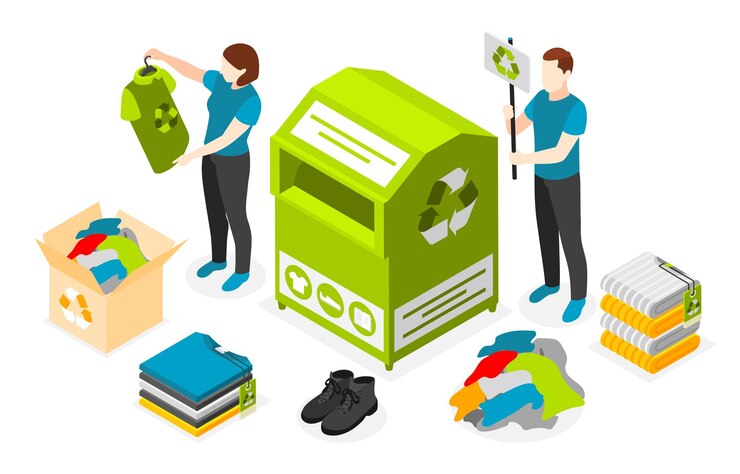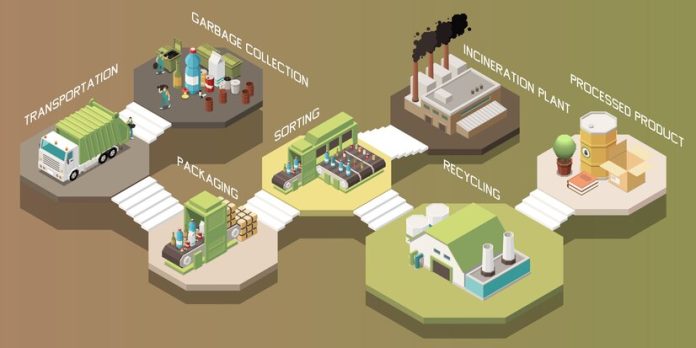The Textile industry is infamous for it’s environmental effect, and textile waste is a main contributor to the problem. Each 12 months, thousands and thousands of amount of textiles are discarded, filling landfills and burns out. To address this problem and reduce the carbon footprint, fabric recycling has come to be increasingly more crucial.

Textile Recycling techniques
Mechanical Recycling : That is one of the most common strategies of textile recycling. It breaks down used textiles into smaller fibers or yarns, which might be then spun into new cloth. The moral aspects with mechanical recycling is that the nice of the recycled fabric is often decrease than the original fabric, limiting its programs.
Chemical Recycling: Chemical recycling is a extra superior method that breaks down textiles on the molecular order. This method can produce higher-first-rate recycled fibers. But, it calls for the usage of chemical substances, which may be environmentally unfavourable if no longer treated properly.
Up-cycling : Up-cycling is a innovative technique to recycling textiles. Rather than breaking down antique garments into fibers, up-cycling transforms them into new, frequently better-cost products.For an example, antique denim jeans may be became elegant luggage or jackets. This technique adds fee to discarded textiles, making them more perfect for customers.
Biodegradable Textiles: A few textiles are designed to be biodegradable that can easily break down naturally over time. That is an eco-friendly choice that reduces the environmental harmful effects of textile waste. However, no longer all textiles are biodegradable, and there are demanding situations related to developing biodegradable options that in shape the performance of conventional textiles.
Textile-to-fabric Recycling: This approach aims to create a closed-loop device wherein old textiles are transformed into new textiles without generating waste. Manufacturers like Patagonia and H&M had been pioneering textile-to-textile recycling projects, emphasizing the significance of making a round economy inside the textile industry.
Challenges of textile Recycling
Infection: Fabric recycling is complex by way of infection from dyes, finishes, and other substances. Sorting and cleansing textiles to do away with contaminants may be labor-extensive and high-priced.
Collection and Sorting: Collecting and sorting textiles for recycling may be difficult. Customers frequently discard clothing in mixed waste containers, making it hard to separate textiles for recycling. Growing green collection systems is essential.
Innovation and investment: Growing and scaling advanced recycling technologies requires good sized investment in studies and development. Without sufficient investment, the textile recycling might also conflict to fulfill the growing demand for sustainable fashion.
Customer awareness: Many customers are unaware of the significance of textile recycling and may not actively are seeking out recycled products. Increasing consciousness and changing purchaser conduct is a key challenge for the enterprise.

Quality and sturdiness: Recycled textiles often have decreased pleasant and sturdiness as compared to new materials. Overcoming this assignment is vital to make certain that recycled products are as appealing to customers as their non-recycled counterparts.
Regulation and standards: The fabric recycling industry lacks constant standards and guidelines, that may restrict its boom and the improvement of a obvious supply chain.
Textile recycling is a essential step towards lowering the textile industry’s environmental footprint. At the same time as there are various techniques available, every comes with its own set of challenges. Overcoming these challenges will require collaboration between the textile industries, government, and clients. Moreover, innovations in recycling technologies and the adoption of sustainable practices by using fashion manufacturers are critical to make certain that textile recycling becomes a mainstream way to the hassle of textile waste. As recognition of those issues grows, the textile industries are progressively embracing the need for a extra sustainable.


